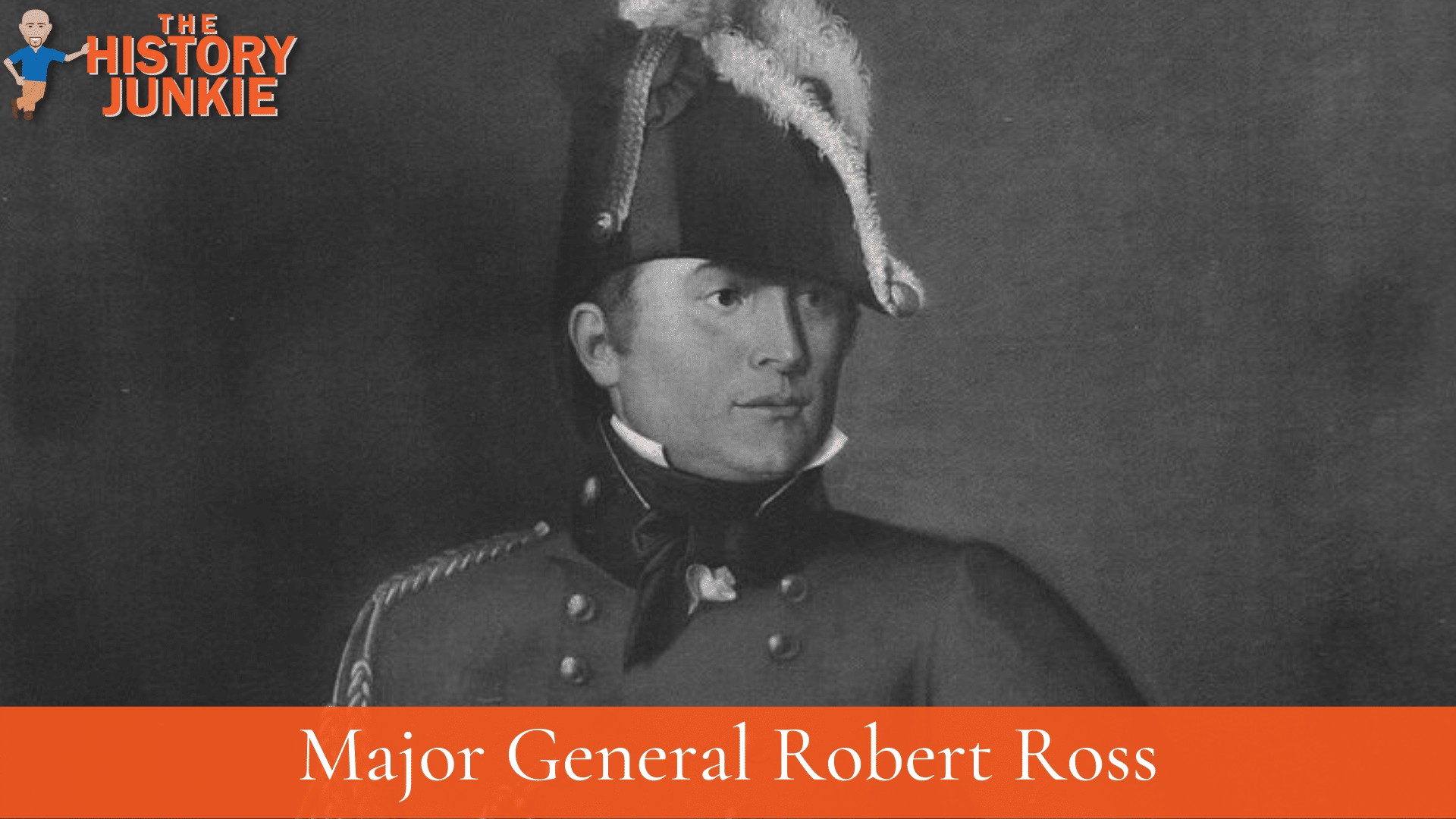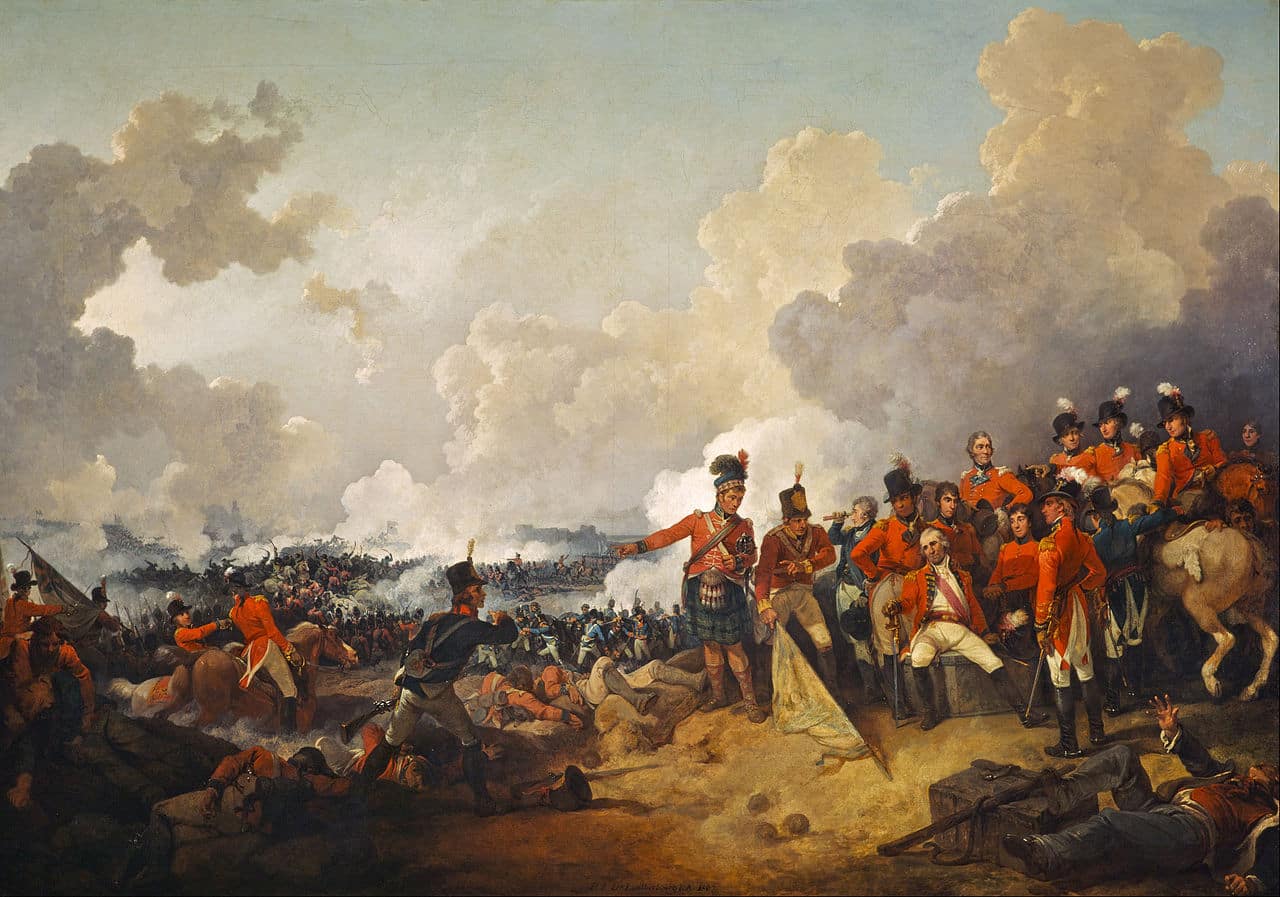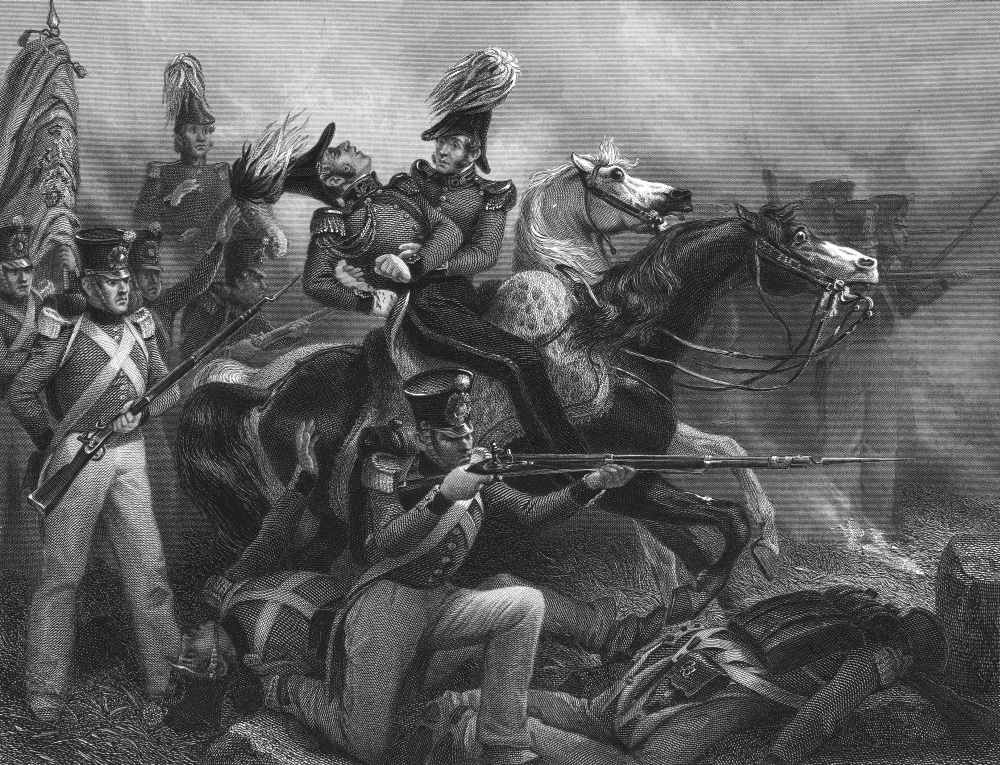Major General Robert Ross was an Irish-born British army officer who participated in the Napoleonic War and in its theatre in North America in the War of 1812.

He had much success throughout the world in the British Army but died during the Battle of Baltimore.
Jump to:
Early Life
Ross was born in Rostrevor, County Down, Kingdom of Ireland, to Major David Ross, an officer in the Seven Years' War, and his mother, half-sister to the Earl of Charlemont.
He was educated at Trinity College, Dublin, and joined the 25th Regiment of Foot as an ensign in 1789. In 1803, he took command of the 20th Regiment.
He fought at the Battle of Krabbendam in the Netherlands, Alexandria, Egypt, the Battle of Maida, Scylla Castle, the Peninsular War at Corunna, and the Battle of Pamplona.

He had been promoted to Lieutenant–Colonel before Corunna. In 1810, Ross was made a colonel as well as aide–de–camp to the king.
He fought in Spain under Wellington in 1812 at the battles of Vittoria, Roncesvalles, and the Battle of Sorauren.
He was seriously wounded in the left side of his neck at the Battle of Orthes on February 27, 1814, and had barely recovered from the wound before being given a command to lead a punitive expeditionary force to the United States.
War of 1812
Robert Ross sailed to North America as a Major General to take charge of all British troops off the east coast of the United States towards the end of the War of 1812.
Ross personally led the British troops ashore in Benedict, Maryland, and marched through Upper Marlboro, Maryland, to the attack on the Americans at the Battle of Bladensburg on August 24, 1814, where the American army of mostly militia quickly collapsed.
Moving on from Bladensburg, Ross moved on to nearby Washington DC, only to have his advance troops fired upon, killing his horse along with numerous other deaths and injuries.
Ross later burned the public buildings of the city, including the United States Capitol and the White House, in retaliation.
Ross then was persuaded to attack Baltimore, Maryland. His troops landed at the southern tip of the Patapsco Neck peninsula at North Point, twelve miles from the city, on the morning of September 12, 1814.
During the march, and just prior to the Battle of North Point, the troops encountered American skirmishers, and Ross rode forward to personally direct his troops.
An American sniper shot him through the right arm into the chest.
According to Baltimore tradition, two American riflemen, teenagers Daniel Wells and Henry McComas, aged 18 and 19, respectively, were credited with killing Ross; both were hanged and killed in the engagement, according to the British.
Ross died while being transported back to the fleet.

After his death, the general's body was stored in a barrel of 129 gallons of Jamaican rum and shipped on the British ship HMS Royal Oak to Halifax, Nova Scotia, where his body was buried on September 29, 1814, in the Old Burying Ground.
It is thought that preparations for the Battle of New Orleans prevented his body from being shipped back to Britain.
Legacy
Robert Ross is commemorated by a 100 ft granite obelisk near the shoreline of Carlingford Lough in the Ross home village of Rostrevor, County Down in Northern Ireland, as well as by a monument in St. Paul's Cathedral, London.
As an augmentation of honor, his armorial bearings were given a second crest in which an arm is seen grasping the stars and stripes on a broken staff, and the family name was changed to the honorific title of Ross-of-Bladensburg.
In honor of Washington DC's history, there is also a portrait of Ross in the capital's rotunda.
